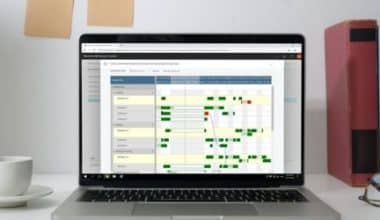Your company cannot function without its employees. It is vital to your overall productivity and performance to be able to manage individuals and teams. Your performance management strategy, including the tools you use to keep staff organized, engaged, and able to communicate successfully, will determine how you do so. Performance management has changed as a result of technological advancements and automation tools. This post provides clear insights into what the performance management process is, the many types of performance management processes, the six steps of the performance management process, as well as its prerequisites and policy.
What is the Performance Management Process?
Through performance management, managers and employees collaborate to plan, monitor, and analyze an employee’s job objectives and overall contribution to the organization. Performance management is a continual process of defining targets, measuring progress, and offering continuing coaching and feedback to ensure that individuals fulfill their objectives and career aspirations. Performance management entails far more than the annual performance review meeting.
Types of Performance Management Processes
Businesses today utilize five different types of performance management system processes:
#1. Forced distribution
Employee evaluations are distributed along a bell curve, with the supervisor awarding a set number of ratings within the group to each performance level on the scale.
#2. 360-degree evaluation
This method gathers information regarding an employee’s work-related behavior and its impact on the employee’s supervisor, coworkers, and subordinates.
#3. Competency-based management
This system focuses on performance as assessed against specific abilities (rather than specific activities or behaviors) for each position.
#4. Objective-based management
Management by objectives (MBO) is a collaborative technique for setting goals for the organization, various departments, and each member.
#5. Graphic rating scales
GRS appraisals outline various variables, such as general behaviors and traits, on which a supervisor scores an employee. The rating is usually given on a scale of three to five. This type of system enables the rater to assess an employee’s performance along a scale.
There appear to be numerous types of performance management system processes. It is determined by the size of your business or team as well as the goal you wish to achieve. So it is totally up to you to decide which of the several types of performance management system processes will be appropriate for your company or organization to achieve specific goals and improve employee performance.
Six Steps Performance Management Process
Six steps follow one after the other in the performance management process. In a nutshell, it is referred to as a continuous process in a company.
For better results, learn about each of the six steps in the performance management process listed below for better results:
Step #1: Prerequisites
The organization then loses its objectivity. As a result, it is necessary to clearly define the purpose for existing and new employees/staff, as well as departments, to integrate all teams to fulfill the company’s aim. In the stages of the performance management process where the company determines its long-term and short-term goals, there are three major prerequisites.
The initial stage prerequisites in the performance management process are at the organizational level, where management describes the holistic picture and specifies the overall purpose of the company’s creation, what its long-term vision is, what values it stands for, and what the company’s mission is chasing.
The second stage of the prerequisites performance management process is the department level, in which management gives targets to each department to reach the overall company goal. At this point, management strategizes the processes and assigns goals to each department.
Individual levels are the final stage of prerequisites in the performance management process, where the department assigns targets to personnel.
The three-stage prerequisites listed above constitute the cornerstone of any organization’s performance management system procedure. Based on these three levels, the management designs strategizes and develops the performance management system. It describes job descriptions, work specifications, and job designs at each level, as well as allocated targets to meet organizational goals.
Step #2: Performance Planning.
Performance planning has three key characteristics:
The yardstick of performance management is used to measure the performance of employees and departments. It gives information on performance gaps and accomplishments. As a result, it identifies how well the particular employee did about his or her allocated targets.
Measuring employee behavior is one of the most complex and challenging tasks in terms of performance requirements. Only via observation and rigorous monitoring by supervisors or human resources departments can human behavior be measured.
The third level of performance planning is the development plan. We make programs to increase employees’ knowledge, abilities, and attitudes at this stage (K, S, A). It enables personnel to raise their professional standards with the use of development tools and strategies.
Step #3: Performance Execution
Performance execution is regarded as the most crucial stage since it is the foundation of the entire process of developing performance management systems and standards. The employee bears the primary duty and responsibility for performance execution, followed by the department and ultimately the organization. As a result, it is regarded as a chain or process in which individual employee performance results in departmental performance.
Step #4: Performance Assessment
The following stage is performance evaluation, followed by performance execution. During this phase, both the employee and the manager are responsible for measuring and assessing employee performance about their goals. During the performance appraisal cycle, the process should include the extent of individual aims, behaviors or attitudes, and special achievements.
Step #5: Performance Review
The performance review stage is a forum where subordinates and superiors exchange performance comments and review individual performance against assigned targets or goals. Employee participation and conversation are equally important for the success of the performance review. Aside from performance reviews, they also address development plans, training to increase skills and knowledge, next year’s goals and targets, and employee and manager expectations. As a result, this stage is also considered the starting point for the performance appraisal cycle for the next year.
Stage #6: Performance Renewal and Reconstruction
The performance management process is constant and continuous. After the performance has been examined and terminated, the cycle for the next performance appraisal begins. It should be re-aligned with the organization’s mission, goals, and objectives for the coming year, as well as linked with the department’s goals. It is a process that must be explored, conceived, developed, implemented, and assessed all over again. This is required since a company’s external environment, such as the market, customers, competitors, suppliers, and so on, is always changing, and any following changes must be prerequisites for performance planning and creating strategic objectives.
Performance Management Policy
The performance management policy is dedicated to providing employees with the resources they need to succeed in their occupations. Employees must exhibit devotion to their jobs by delivering at least satisfactory results. In addition to completing job functions, employees are expected to display professional interactions with coworkers, students, patients, and vendors. At times, employees may have trouble meeting the requirements of their positions. In general, the performance management policy will give the employee the ability to make and sustain essential improvements.
This performance management policy defines the method for assisting employees in improving poor or inconsistent performance as well as the steps to be taken if appropriate change does not occur promptly. Corrections for undesirable behavior may fall under either this policy or the Discipline Policy, depending on the individual circumstances and the kind and amount of the correction required.
Companies’ workplace expectations may be addressed under either policy, depending on the facts of the scenario.
Examples of Inadequate Performance Management Covered by This Policy
- Lack of professionalism in service delivery, communication quality, and demeanor
- Inconsistency in the fulfillment of key duties
- A pattern of ignoring aspects of one’s employment
- Customer, patient, or student concerns that are frequently substantiated
- Not meeting reasonable deadlines
- A lack of collaboration
Prerequisites in Performance Management Process
Performance management can be defined as the continual practice of controlling people’s performance to achieve desired goals. Furthermore, performance management benefits all of an organization’s primary stakeholders by clearly describing what needs to be done to achieve specific goals.
Some of the basic prerequisites without which a performance management process in a company can not function properly are:
- It should elicit extremely high levels of participation from all members of an organization. It should be a collaborative effort.
- The support and dedication of top management are critical for establishing a strong performance culture in a firm.
- The organizational vision, mission, and goals should be clearly stated and understood by all levels so that all activities are oriented toward the achievement of the organizational goals.
- A clear definition of the roles for doing a certain task within the organizational framework stems from departmental and organizational objectives. The system should also be able to explain how one position is related to others.
Conclusion
The tools you use and the people who do the work determine your ability to support your consumers. Organizations that prosper have well-designed processes and teams whose performance is consistently measured.
With a performance management process policy in place, you can be confident that your team will work as efficiently as possible. When things aren’t working properly, an automated tool can help you identify problems early on and provide a solution that allows them to be readily adjusted for better performance. With this in mind, the way employees and management collaborate will have the largest impact on how your firm operates daily.
Performance Management Process FAQs
What are the 4 major components of the performance management process?
- Establish personal business development objectives.
- Continuously teach and provide feedback to maximize performance.
- Conduct official evaluations and reviews.
- Distribute awards and appreciation.
What are the 5 performance objectives?
Five performance objectives are essential for overall performance: quality, speed, dependability, adaptability, and affordability.
What are the 3 types of performance management?
Organizational Performance Management Systems Are Divided Into Three Types
- Balanced Scorecard.
- Management Based on Objectives
- Budgeted Business Plans






